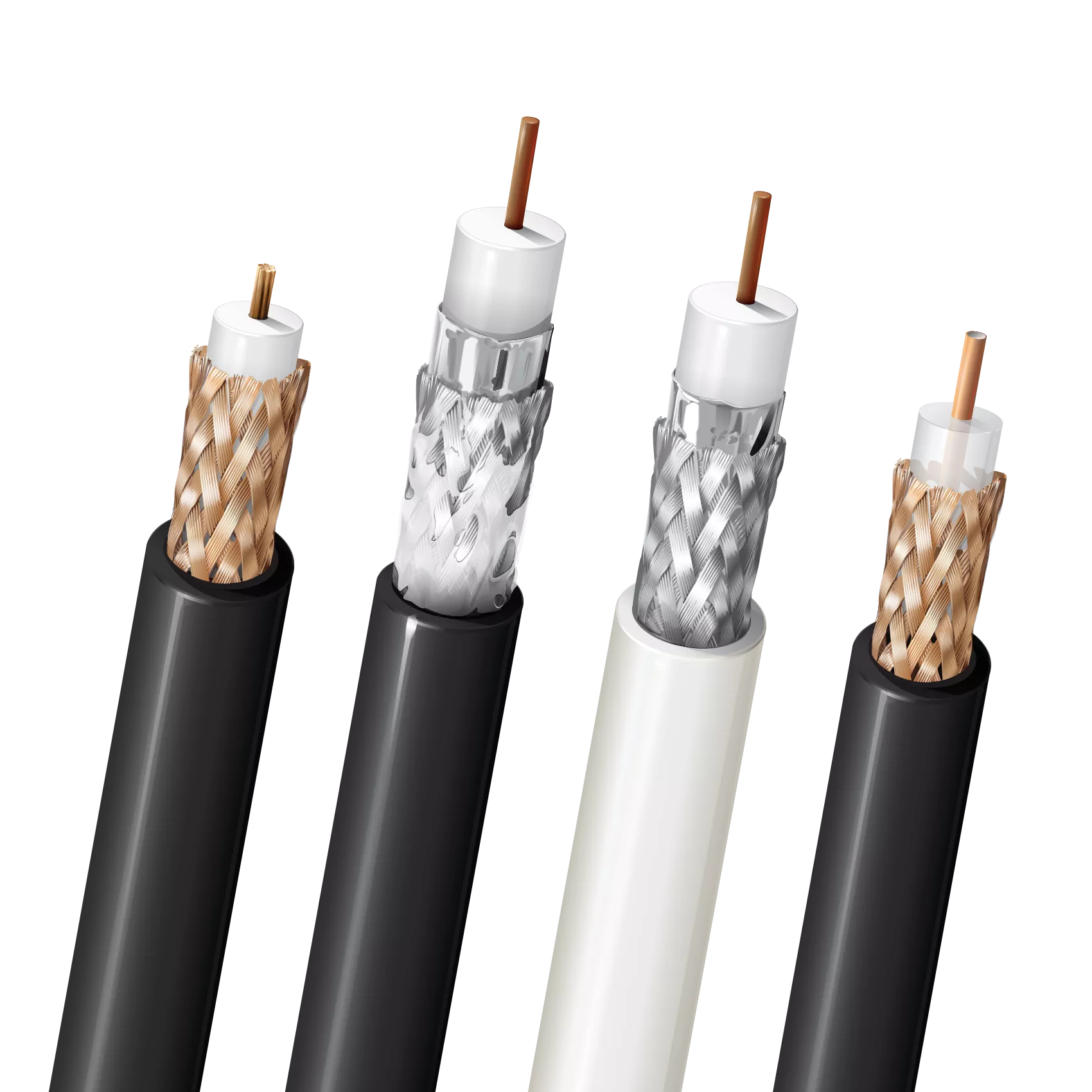Cables play a pivotal role in transmitting signals for various applications, and the RG59 cable remains a popular choice for specific uses. Known for its flexibility and affordability, the RG59 cable is widely employed in CCTV systems, video signal distribution, and low-frequency applications. When choosing between RG59 and other cables, such as the RG6 cable, understanding their differences is essential for making the right decision.
What is an RG59 Cable?
An RG59 cable is a type of coaxial cable designed for transmitting video and low-frequency signals. It features a central conductor, dielectric insulation, a braided shield, and an outer protective jacket. These components work together to maintain signal quality by reducing interference and signal loss.
The primary strength of the RG59 cable lies in its use for short-distance transmissions. Due to its thinner design, it is easier to install and route through tight spaces. However, its smaller conductor and higher attenuation rates make it less suitable for high-frequency or long-distance applications.
Comparing RG59 and RG6 Cables
When discussing coaxial cables, the RG6 cable often comes up as an alternative to RG59. Both have specific advantages depending on the application:
Signal Transmission Distance
The RG59 cable is better suited for shorter distances due to its higher attenuation rates. In contrast, the RG6 cable, with its thicker conductor and lower attenuation, can handle longer cable runs without significant signal degradation. For installations where signal integrity over long distances is critical, RG6 is the better choice.
Frequency Handling
RG59 cables are ideal for low-frequency applications, such as analog video transmission and CCTV systems. On the other hand, RG6 cables are designed to handle higher frequencies, making them a preferred option for satellite TV, cable internet, and digital video.
Cable Thickness and Flexibility
The thinner design of the RG59 cable makes it more flexible and easier to handle during installation. It is well-suited for applications requiring tight bends or compact setups. The RG6 cable, while thicker and slightly less flexible, provides better shielding and durability for outdoor and long-term use.
Cost Considerations
RG59 cables are generally more affordable than RG6 cables, making them a cost-effective solution for specific applications. For projects with budget constraints, the RG59 cable can deliver reliable performance without overspending.
Applications of RG59 Cable
The RG59 cable is versatile and widely used in various fields. Its specific design and capabilities make it ideal for:
CCTV Systems
One of the most common applications of RG59 cables is in closed-circuit television (CCTV) systems. These cables are perfect for transmitting analog video signals over short distances, such as within buildings or confined areas. RG59 cables often come bundled with power wires, allowing simultaneous video and power transmission for security cameras.
Composite Video Connections
In audio-visual setups, RG59 cables are frequently used to carry composite video signals. They provide reliable transmission for connecting devices like DVD players, projectors, and older TVs. Although modern HDMI cables dominate digital video connections, RG59 cables remain a practical choice for legacy systems.
Low-Frequency RF Applications
RG59 cables are suitable for low-frequency RF (radio frequency) applications, such as connecting radio transmitters and receivers. Their shielding effectively minimizes interference, ensuring clear and stable signal transmission in environments with minimal RF noise.
Intercom Systems
Many intercom systems use RG59 cables to connect units within buildings. These cables support clear audio transmission, even in multi-unit setups, making them a reliable choice for residential and commercial properties.
Advantages and Limitations of RG59 Cable
Like any other cable type, the RG59 cable offers unique benefits and has certain limitations. Understanding these factors will help determine if it is the right cable for your needs.
Advantages
- Flexibility: RG59 cables are easier to install in tight spaces due to their thinner design.
- Cost-Effective: They are more affordable than RG6 cables, making them ideal for budget-conscious projects.
- Low-Frequency Performance: RG59 cables work well for analog video, CCTV systems, and other low-frequency applications.
- Wide Availability: These cables are widely available and compatible with many standard connectors and devices.
Limitations
- Shorter Distance Capability: RG59 cables experience higher signal loss over long distances, making them less suitable for extensive installations.
- Limited Frequency Range: They are not ideal for high-frequency applications, such as satellite TV or broadband internet.
- Lower Durability: Compared to RG6 cables, RG59 cables offer less shielding and are more prone to interference in environments with significant RF noise.
Choosing Between RG59 and RG6 Cables
Selecting between RG59 and RG6 cables depends on the specific requirements of your project. Here are some factors to consider:
- Application Type: For CCTV systems, intercoms, and analog video setups, RG59 cables are usually sufficient. However, for digital video, satellite TV, or internet connections, the RG6 cable is a better fit.
- Signal Distance: For installations requiring longer cable runs, opt for RG6 cables due to their lower attenuation and superior signal preservation.
- Frequency Needs: If your application involves high-frequency signals, choose RG6 cables. RG59 cables are better suited for low-frequency tasks.
- Budget: RG59 cables are more cost-effective, making them ideal for projects with tighter budgets. However, ensure they meet the technical requirements of the application.
Conclusion
The RG59 cable continues to be a reliable and versatile choice for low-frequency signal transmission. Whether used in CCTV systems, intercoms, or composite video setups, it offers excellent performance for short-distance applications. When deciding between RG59 and RG6 cables, evaluate the specific needs of your project, including frequency, distance, and budget. By making an informed choice, you can ensure that your cabling solution delivers optimal performance for years to come.
